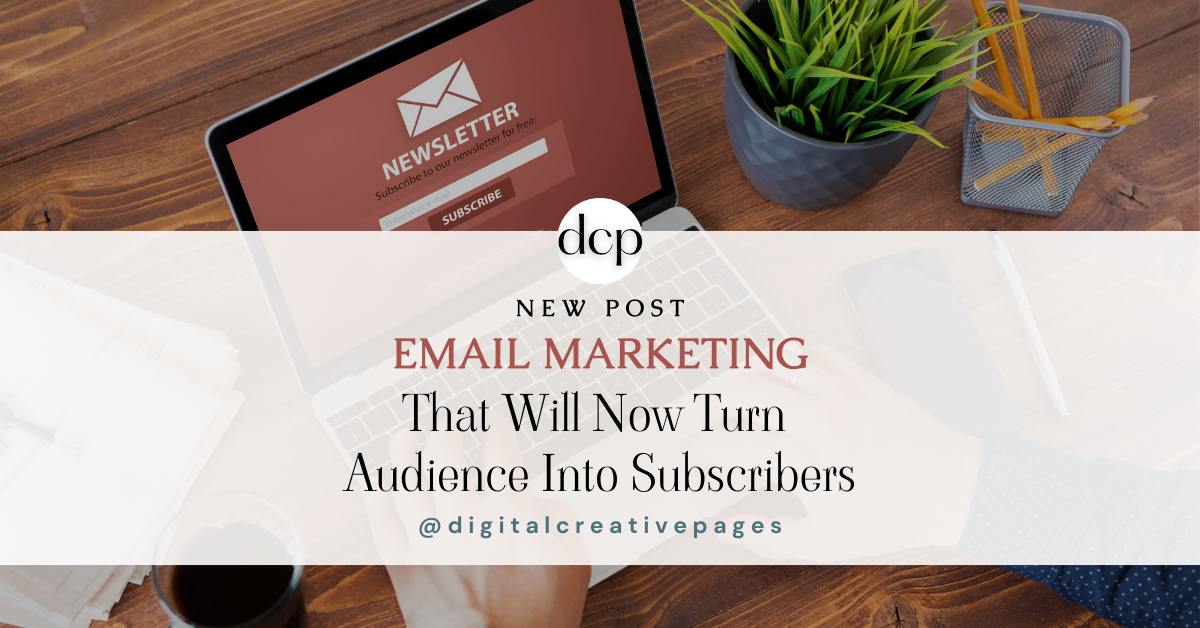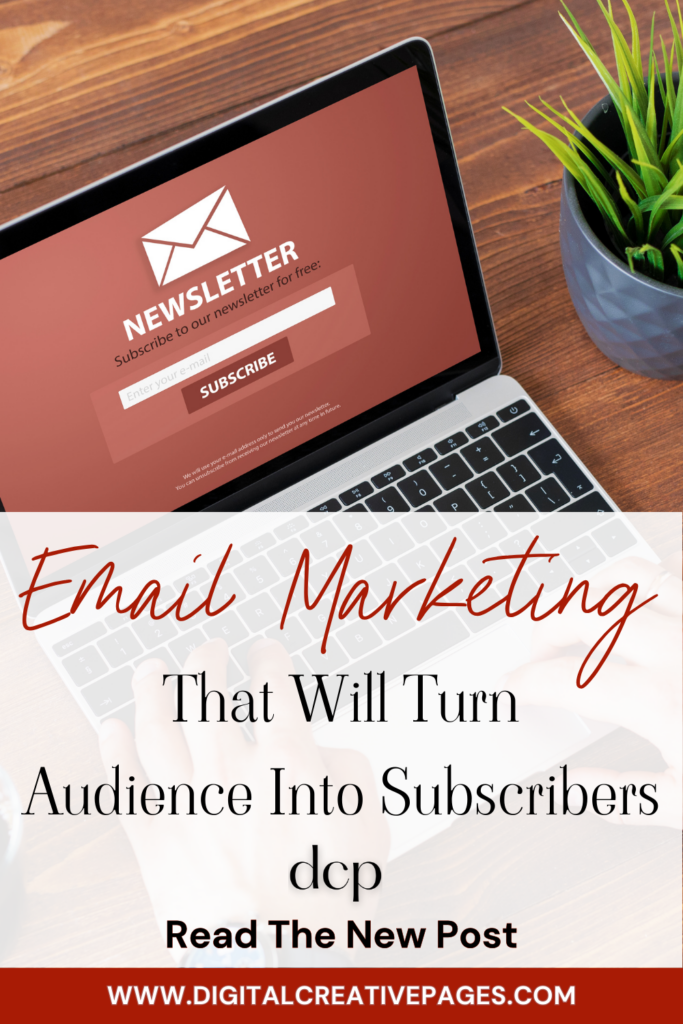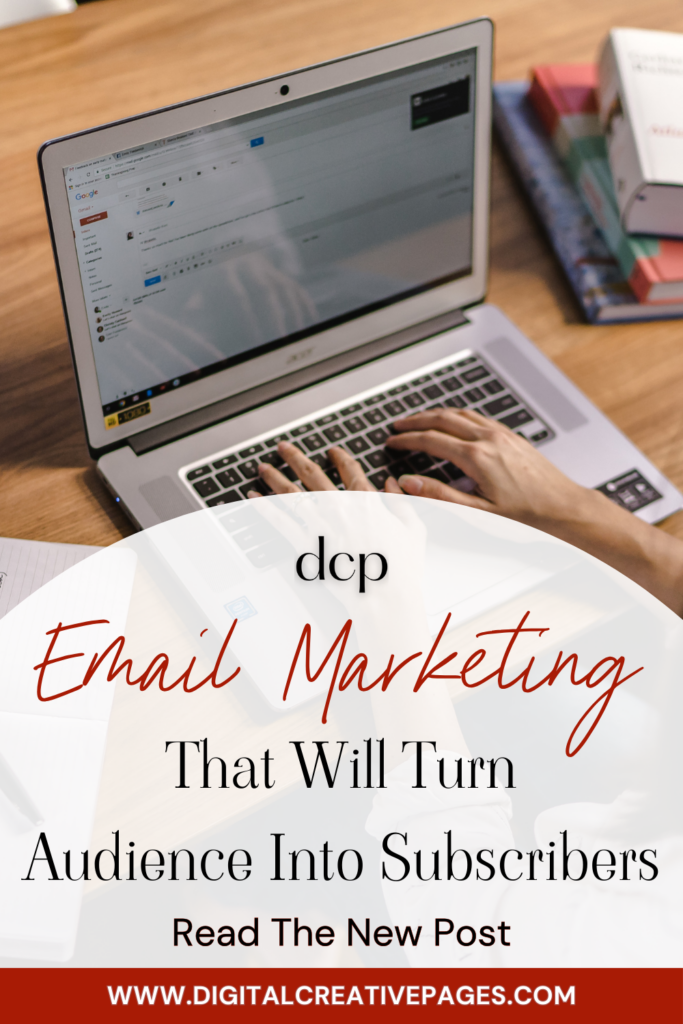Email marketing is one of the most powerful tools for businesses looking to build long-term relationships with their audience. Whether you’re running an online store, a service-based business, or a personal brand, growing and nurturing your email list can lead to better engagement, higher sales, and a more loyal customer base.
In this beginner-friendly guide to email marketing, we’ll cover the essentials of getting started, from creating engaging newsletters to growing your email list and turning subscribers into customers. Let’s dive in and explore how you can make email marketing work for you!
Pin this for later
1. What Is Email Marketing And Why Is It Important?
At its core, email marketing is the practice of sending targeted messages directly to people who have opted into your email list. It’s an essential marketing strategy because it allows you to:
- Build direct communication with your audience
- Deliver personalized content and offers
- Drive traffic to your website or blog
- Increase conversions and sales
- Cost-effective: Email marketing often provides a higher ROI compared to other marketing channels.
- Measurable: Unlike some traditional marketing methods, email marketing allows for precise tracking and analysis of your campaigns.
- Scalable: As your business grows, email marketing can easily scale to accommodate larger audiences without a proportional increase in costs.
While social media platforms can be great for brand awareness, email marketing allows you to connect more deeply with your audience, right in their inbox.
2. Building Your Email List: Where To Start?
Your email list is your most valuable asset in email marketing. The bigger and more engaged your list is, the more opportunities you have to reach potential customers. But how do you grow it?
Create A Lead Magnet:
A lead magnet is an incentive you offer to people in exchange for their email addresses. Common lead magnets include eBooks, checklists, guides, or discount codes. Make sure your lead magnet is something your target audience will find valuable.
Use Signup Forms Strategically:
Place signup forms in visible places on your website, like your homepage, blog sidebar, or at the end of blog posts. Pop-ups can also work well when used carefully—just make sure they don’t interrupt the user experience.
Promote Your Form on Social Media:
Let your social media followers know that you offer valuable content through email, and direct them to your signup form.
Host Webinars or Online Events:
Require email registration to attend, providing value while growing your list.
Leverage Partnerships:
Collaborate with complementary businesses to cross-promote and share audiences.
Use QR Codes:
Place QR codes linking to your signup form on physical marketing materials or in-store displays.
3. Crafting Engaging Newsletters
Once you’ve built your email list, the next step is to create newsletters that keep your subscribers engaged. The goal is to provide value consistently while keeping your content relevant and interesting.
Personalization Is Key:
Subscribers are more likely to engage with emails that feel personal. Use their names in the subject line or body of the email. You can also segment your list based on interests or purchasing behavior, so each group receives content tailored to them.
Write Compelling Subject Lines:
Your subject line is the first thing your audience will see. It needs to grab their attention and make them want to open the email. Try to keep it short, intriguing, and relevant to the content inside. For exam
- “5 Tips to Skyrocket Your Productivity (Starting Today!)”
- “Exclusive Discount Inside—Get 20% Off Your Next Purchase”
Offer Value In Every Email:
Whether it’s a special offer, a helpful tip, or a sneak peek of upcoming products, each email should offer something your audience finds valuable. A good rule of thumb is the 80/20 rule: 80% value, 20% promotion.
Make It Visually Appealing:
Use images, GIFs, or even short videos to make your emails more visually engaging. Break up the text with clear headings, bullet points, and call-to-action buttons to guide your readers.
Use Power Words:
Incorporate emotionally charged words to make your content more compelling and increase engagement.
Tell Stories:
Use storytelling techniques to make your newsletters more relatable and memorable.
Include User-Generated Content:
Share customer testimonials, photos, or reviews to build trust and showcase your community.
How To Turn Subscribers To Customers
The ultimate goal of email marketing is to convert subscribers into paying customers. Here’s how you can create a seamless journey from your newsletter to the checkout page:
Welcome Series:
When someone signs up for your email list, you can automate a welcome series of emails that introduce them to your brand. This is a great opportunity to share your brand story, showcase your best products or services, and offer a special discount for first-time buyers.
Include Clear Call-to-Actions (CTAs):
In every email, make sure you have a clear call to action. Whether it’s “Shop Now,” “Learn More,” or “Download Your Free Guide,” the CTA should be direct and easy for your readers to follow.
Offer Exclusive Discounts and Promotions:
One of the best ways to drive conversions is by offering exclusive deals to your email subscribers. Let them know they’re getting special treatment, like early access to sales or a discount code only available to them.
Implement Abandoned Cart Emails:
Automatically send reminders to customers who leave items in their shopping cart without completing the purchase.
Create a Loyalty Program:
Use email to manage and promote a loyalty program, encouraging repeat purchases.
Personalized Product Recommendations:
Based on past purchases or browsing history, suggest relevant products to each subscriber.
Measuring Success: Email Marketing Metrics
To make sure your email marketing strategy is working, you’ll need to track certain key metrics. These will help you see what’s working and where you need to improve.
- Open Rate: The percentage of people who open your email. A good open rate is typically around 20-30%, but this can vary depending on your industry.
- Click-Through Rate (CTR): The percentage of people who click a link inside your email. A high CTR indicates that your content is relevant and engaging to your audience.
- Conversion Rate: The percentage of people who complete a desired action after clicking on a link in your email, such as making a purchase.
- Unsubscribe Rate: Pay attention to how many people are unsubscribing from your list after each email. A high unsubscribe rate could mean your content isn’t resonating with your audience, or you’re sending too many emails.
- Revenue Per Email: Calculate how much revenue each email generates on average.
- List Growth Rate: Track how quickly your email list is growing over time.
- Forward/Share Rate: Measure how often your emails are forwarded or shared, indicating content virality.
Free Tools For Email Marketing
You don’t need to spend a lot of money to get started with email marketing.
Here are a few free tools to help you manage your campaigns effectively:
- Mailchimp: A popular choice for beginners, offering free email templates and automation tools.
- ConvertKit: Great for creators looking to grow their audience with targeted email sequences and opt-in forms.
- MailerLite: Offers an easy-to-use platform for creating beautiful emails and automating your campaigns.
- Sendinblue: Offers a free plan with up to 300 emails per day and unlimited contacts.
- Moosend: Provides a free plan for up to 1,000 subscribers with unlimited emails.
- Benchmark Email: Features a free plan with up to 250 emails per month and 500 subscribers.
I like using ConvertKit as it is free for the first 1000 subscribers. So fingers crossed I get to that number soon.
7. Best Practices For Successful Email Marketing
To make the most of your email marketing efforts, keep these best practices in mind:
- Keep Your Emails Mobile-Friendly: A large percentage of people read emails on their phones. Ensure your emails are responsive and look good on mobile devices.
- Send Consistently: Decide on a regular schedule for sending emails (e.g., weekly or bi-weekly) so your audience knows when to expect your content.
- Test Your Emails: Use A/B testing to experiment with subject lines, CTAs, and content to see what resonates best with your audience.
- Stay Compliant: Make sure you comply with email marketing regulations, like GDPR and CAN-SPAM, by including an unsubscribe link and being transparent about how you’ll use subscribers’ data.
- Optimize Send Times: Experiment with different days and times to find when your audience is most likely to engage.
- Use AI-Powered Tools: Leverage artificial intelligence for subject line optimization, send time prediction, and content recommendations.
- Implement Double Opt-in: While it may slow list growth slightly, it ensures a higher quality list with more engaged subscribers.
- Focus on Email Deliverability: Maintain a clean list, use authentication protocols (SPF, DKIM, DMARC), and monitor your sender reputation to ensure your emails reach the inbox.
8. Advanced Email Marketing Strategies
- Behavioral Trigger Emails: Set up automated emails based on specific user actions or inactions on your website or with your emails.
- Interactive Emails: Incorporate elements like countdown timers, polls, or clickable image carousels to boost engagement.
- Dynamic Content: Use subscriber data to dynamically change parts of your email content to be more relevant to each individual.
- Email Preference Centers: Allow subscribers to choose the types of emails they receive and how often, reducing unsubscribes.
- Re-engagement Campaigns: Create targeted campaigns to win back inactive subscribers before removing them from your list.
Download Your Email Marketing Checklist
Conclusion: Start Building Relationships With Email Marketing Today
Email marketing is an incredibly powerful tool that allows you to connect directly with your audience, build trust, and turn subscribers into loyal customers. By following these steps—growing your email list, crafting engaging newsletters, and tracking your results—you’ll be well on your way to mastering the art of email marketing.
So, what are you waiting for? Start implementing these email marketing strategies and watch your audience engagement and business grow!
MY TOP POSTS
Stay connected outside my social media with my weekly Newsletter – Digital Content Pages
My introducer post – check out why I chose Showit as my website builder here
Use my code DCP to get one 1.5 months free on Showit
Get all the resources for your social media and digital marketing without breaking the bank from my DCP Shop here
Pin this for later


